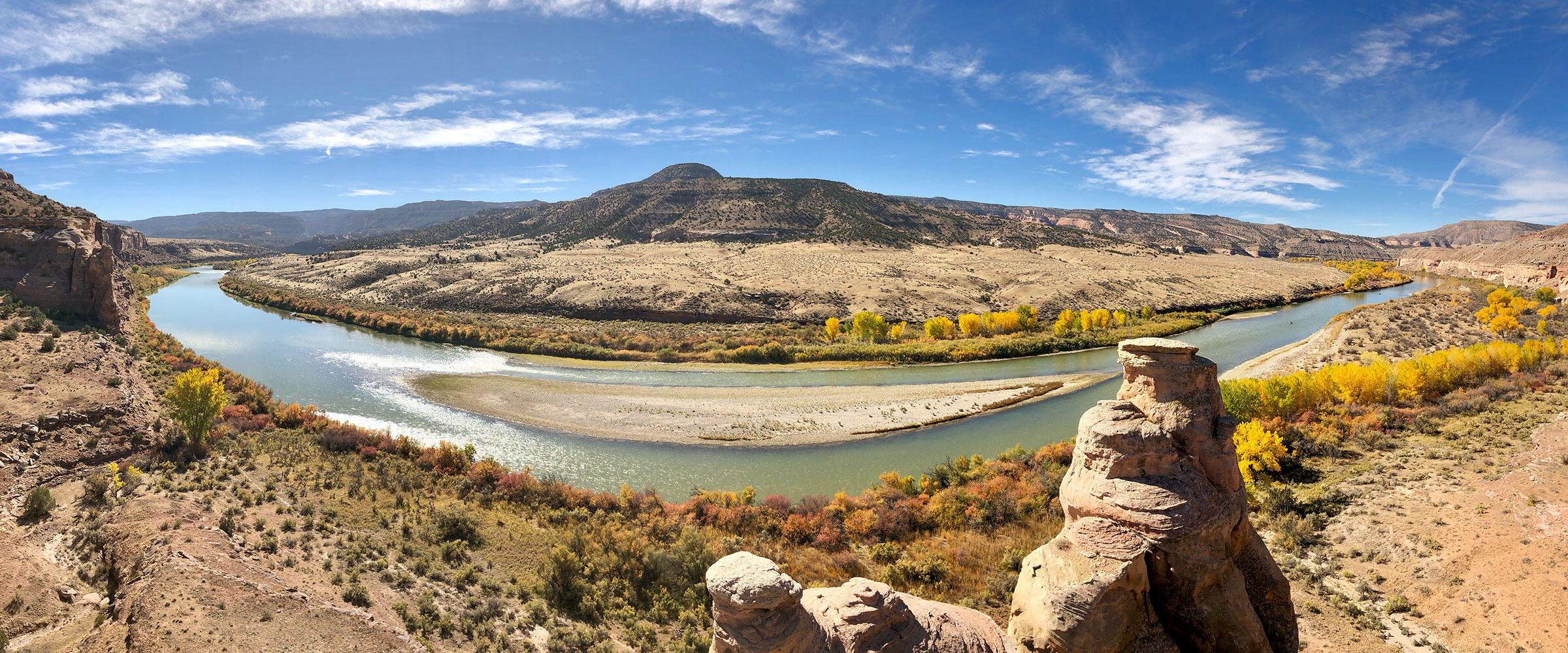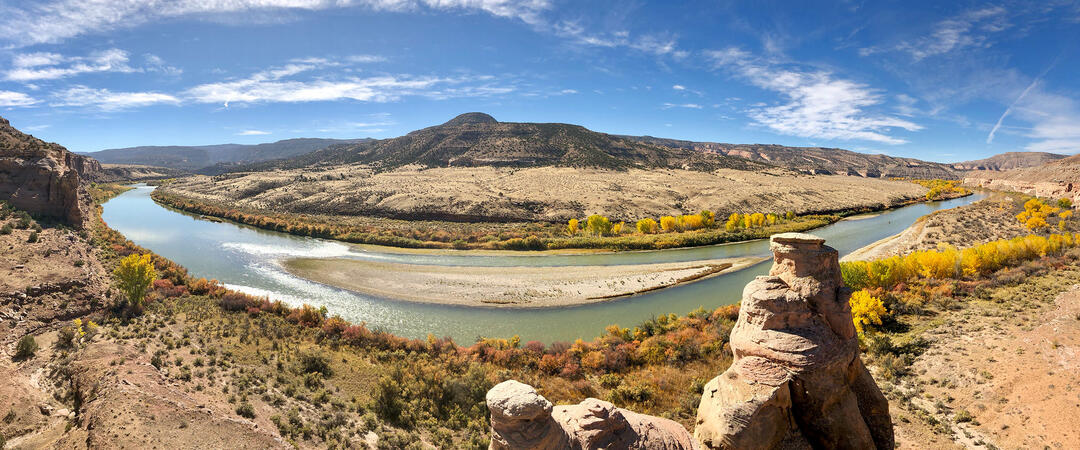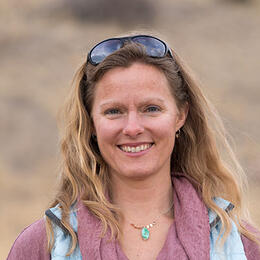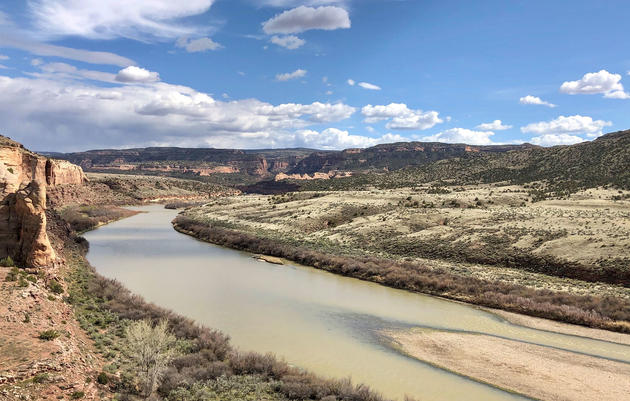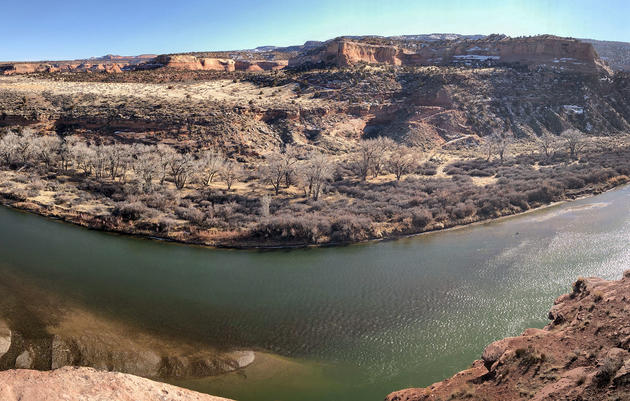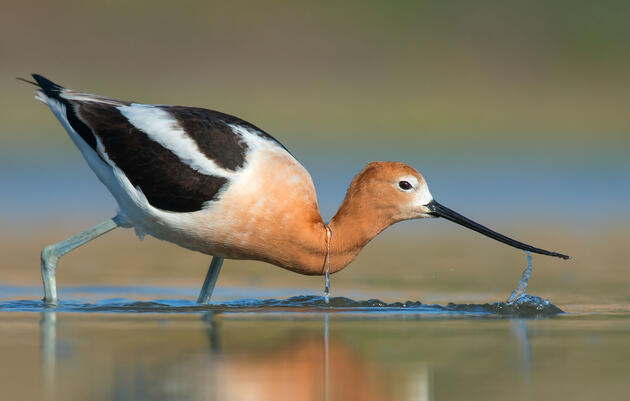Colorado is in the midst of prime wildfire season. Wildfires have gripped Colorado for much of the summer and they continue to burn—with both historic size and force into the fall. Grimly, 2020 broke two Colorado wildfire records with the Cameron Peak Fire—206,977 acres and 55 percent contained at the time of publication, easily surpassing the Pine Gulch Fire, 139,007 acres, which surpassed the previous record-holding Hayman Fire that burned near Colorado Springs in 2002. Colorado’s 20 largest wildfires all occurred since 2000.
Fire and water do mix. That is, there’s a direct connection between them. The 2020 water year, October 1, 2019 - September 31, 2020, is now Colorado’s third driest on record, falling behind only the dusty years of 2018 and 2002 (the year in which the previously largest wildfire occurred). Additionally, 2020 is one of Colorado’s warmest years. August 2020 was the hottest on record since Colorado began record-keeping in 1895.
Models show that climate change and historic drought will continue to affect the Colorado River Basin in the coming years and further increase the severity and frequency of wildfires. These fires create devastating impacts for communities, wildlife, and forest ecosystems, including Colorado’s rivers and waterways.
In September, significant numbers of birds across southern Colorado and northern New Mexico fell out of the sky—dead. The definitive cause of death won’t be known for a while, but fitness, wildfires, smoke exposure, drought, habitat degradation, and major weather events were all likely contributors. Climate change with hotter and drier weather is a common thread amongst all of these issues.
Our natural ecosystems are at risk and we all depend upon them. In the face of persistent hotter and drier trends and historic wildfires, we must take steps now to bolster the resiliency of our ecosystems and all of the communities that rely on them. A critical piece of that resiliency is supporting healthy rivers and streams.
Colorado’s Water Plan, signed in 2015, offers a blueprint for investing in Colorado’s rivers and waterways. And 2020 presents an opportunity because it is the five-year anniversary and the start of the first update of the Water Plan. Right now we are in the early stages of this process to vet and update the Plan to ensure it better aligns with our current needs—at the local and state levels. This process is a critical opportunity to scientifically evaluate the health of our rivers and includes trackable objectives for sustainable river health into the Plan.
The effects of wildfires on river health, specifically the Colorado River, are significant. They include post-fire flooding, debris flows, erosion, and the threat of potentially toxic debris getting into our rivers and water supply. For instance, the Grizzly Creek Fire that raged through Glenwood Canyon this summer was described as a “public works fire” for its proximity to the headwaters of the Colorado River, which 40 million people across the West rely upon. The ash and debris created by the fire have already reduced the usable water supplies of Glenwood Springs by 50 percent, and it could be years before the watershed recovers.
"From extreme drought to extreme fires, 2020 highlights the need for us to build our climate resilience and protect the watersheds that sustain our streams, farms, and cities. Finding these opportunities and identifying the state of the science is at the heart of the Colorado Water Plan update," said Colorado Water Conservation Board Director Rebecca Mitchell.
Thankfully, the Colorado Water Plan encourages and supports efforts of local watershed groups in their efforts to promote healthy, functioning rivers and streams, including responding to the effects of fire. This support has allowed the Middle Colorado Watershed Council to engage in a multi-year, stakeholder-focused planning process to identify existing and future water needs in the watershed in the face of a changing landscape.
“Our stakeholders have identified the critical need for coordinated wildfire planning and response implementation. We have an immediate opportunity to organize an ad hoc coalition to serve as a post-fire planning and coordination hub that bridges individual entity interests and efforts in the Grizzly Creek burn area” says Laurie Rink, project manager with the Middle Colorado Watershed Council. “Immediate focus will be on post-fire recovery and rehabilitation to reduce well-known post-fire hazards, such as flooding and erosion. Longer-term efforts can turn towards planning for and implementing future fire risk mitigation throughout the watershed.”
But the challenges our rivers face extend well beyond the impacts of wildfires. The average flow of the Colorado River has declined 20 percent over the last 20 years largely due to climate change, which is causing warming temperatures, diminished rainfall, increased evaporation, and a snowpack that’s shrinking and melting earlier.
Healthy rivers flow from healthy watersheds. We need to broaden the river health conversation from just the river channel itself to the entire “riverscape.” Riverscapes are streams, floodplains rivers, and the vegetation surrounding them. They support habitat critical to birds and other wildlife and ecological services that directly influence water quality and quantity. According to Colorado’s Water Plan, approximately 80 percent of Colorado’s clean, reliable drinking water comes from these forested watersheds.
However, we have significant data gaps around the physical and biological health of our rivers and watersheds. Without knowing current scientific information on our waterways, how can we create and track projects and management plans that protect Colorado’s rivers, our most valuable resource?
Unhealthy rivers also hinder water supply recovery after wildfires. Riverscape vegetation serves as a filter and a base from which other vegetation can recover. To ensure that our riverscapes and forests can recover from wildfires and continue to support communities, agriculture, businesses, and recreation, we must invest in entire ecosystems. This means implementing tried and true wildfire mitigation, including forest treatments and prescribed fire, as well as investing in the health of our rivers and streams. By keeping our riverscapes and riparian ecosystems healthy, we will be creating more resilience to climate change and mitigating the effects of wildfires on water supplies and habitat.
Everyone deserves a healthy river. The good news is that we have an opportunity to carefully assess the health of our rivers now during the Water Plan update. Rivers are often a community’s identity. The City of Fort Collins and some other communities are scientifically evaluating the health of their rivers and working on locally supported projects to improve it. That’s a good start.
Now is the time to identify how to best guarantee a healthy, secure water future for our state. Colorado's Water Plan sets a measurable objective to cover 80 percent of locally prioritized rivers with stream management plans, and 80 percent of critical watersheds with watershed protection plans, all by 2030.
But how will we know which rivers and streams to prioritize? That’s where science-based river health assessments come in. These assessments can inform stream management plans and locally driven projects to protect or improve river conditions and empower communities to develop tailored resilience strategies and track river health in time. It’s essential that an updated Water Plan provide funding and pathways to fill river health information gaps.
While rivers connect all Coloradans through water supply, so does drought and wildfire impacts. When we invest in the health of our rivers, Colorado invests in our resilience to climate change.
A version of this article was also published in The Colorado Sun.

